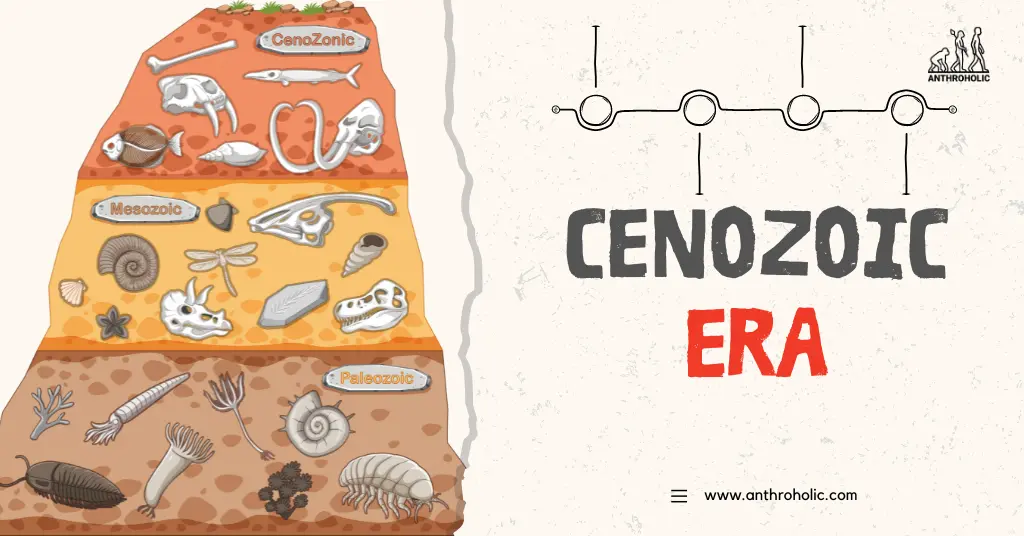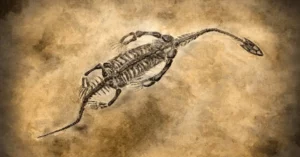AI Answer Evaluation Platform Live Now. Try Free Answer Evaluation Now
Cenozoic Era
The Cenozoic Era, also known as the Age of Mammals, is the current and most recent of the three Phanerozoic geological eras, following the Mesozoic Era and extending from 66 million years ago to the present day. This era is marked by the dominance of mammals on land and a significant evolutionary diversification and development in terrestrial and marine life.

Understanding the Cenozoic Era: Its Divisions and Timeline
The Cenozoic Era is divided into three periods: the Paleogene, Neogene, and Quaternary, which are further subdivided into epochs. The table below provides a detailed overview of the timeline.
| Period | Epochs | Approx. Time Span |
|---|---|---|
| Paleogene | Paleocene, Eocene, Oligocene | 66 to 23 million years ago |
| Neogene | Miocene, Pliocene | 23 to 2.58 million years ago |
| Quaternary | Pleistocene, Holocene, Anthropocene | 2.58 million years ago to present |
The most recent epoch, the Anthropocene, is still under debate among scientists and yet to be officially recognized. Some argue that it should begin with the advent of agriculture around 10,000 years ago, while others suggest it should start with the Industrial Revolution [1].
Flora and Fauna Evolution in the Cenozoic Era
Mammalian Domination
The Cenozoic Era is known as the Age of Mammals. This era saw a dramatic diversification of mammals, as they adapted to niches left vacant after the extinction of the dinosaurs. In the earlier epochs, mammals were generally small, but they eventually evolved into a vast range of sizes. Notable mammalian groups that evolved include primates, cetaceans, pinnipeds, and ungulates. The evolution of primates led to the appearance of humans, fundamentally altering the course of life on Earth [2].
Bird and Marine Life Evolution
Birds also evolved significantly during this era. The Paleogene period saw the diversification of numerous bird orders, while the Neogene period saw the first appearances of many bird groups familiar today. Marine life also diversified rapidly; most present-day marine invertebrates can trace their origins back to this era [3].
Flora Evolution
The Earth’s flora also underwent significant changes during the Cenozoic Era. The Paleogene period marked the development and spread of grasses. By the Neogene period, grasslands became more widespread, leading to the evolution of grazing herbivores. The rise of grasslands, forests, and other vegetation greatly impacted the climate and atmosphere, influencing further evolution [4].
Climate and Geography of the Cenozoic Era
The Cenozoic era started with the warm and humid conditions of the Paleocene and Eocene epochs. However, the climate gradually cooled, leading to the Ice Age of the Pleistocene epoch. This era also saw significant geographical changes with the continents moving to their current positions. The formation of the Isthmus of Panama, the connection between North and South America, had a profound impact on global ocean currents and climate [5].
Human Influence and the Anthropocene
The Quaternary period, especially the Holocene epoch, saw the rise and spread of humans. Humans have significantly influenced Earth’s ecosystems and climate, prompting some scientists to argue that we have entered a new epoch – the Anthropocene. This reflects the global environmental changes resulting from human activities, including increased greenhouse gases, habitat destruction, and species extinctions [6].
In conclusion, the Cenozoic Era marks a crucial phase in the Earth’s history, characterized by the rise of mammals, significant floral diversification, and the emergence of humans. As we continue into what might be termed the Anthropocene, understanding the lessons of this era is more important than ever for predicting and mitigating future environmental change.
The Impact of the Cenozoic Era on Today’s Biodiversity
The Cenozoic Era’s significance lies not only in its historical context but also in its continuing impact on present-day biodiversity. As the current geological era, the Cenozoic has fundamentally shaped the world as we know it.
The Rise of Mammals and Biodiversity
The Cenozoic Era, referred to as the Age of Mammals, has directly contributed to the diverse array of mammals we see today. With the extinction of non-avian dinosaurs at the end of the Mesozoic Era, mammals had an evolutionary opportunity. Filling the niches left by extinct creatures, they diversified into various forms we now know, from the tiniest shrews to the largest whales [7].
This era also saw the rise of primates, culminating in the evolution of Homo sapiens, profoundly impacting Earth’s ecosystems. Humans have come to influence every corner of the globe, from the poles to the tropics, in part because of their cognitive abilities, social structure, and use of technology [8].
Flora Evolution: The Emergence of Modern Ecosystems
Just as the fauna diversified during the Cenozoic, so did flora. The development and spread of grasses during the Cenozoic marked a substantial change in terrestrial ecosystems. The subsequent formation of grasslands in the Neogene period led to the evolution of new types of herbivores, contributing to the biodiversity we see today. Additionally, the spread of flowering plants (angiosperms) resulted in new ecosystems and supported the evolution of numerous insect, bird, and mammal species [9].
Climate Change: A Cenozoic Perspective
Examining the Cenozoic Era can provide valuable insights into climate change. The climate has shifted dramatically during this era, from the hot, humid world of the Eocene to the ice ages of the Pleistocene. Studying these natural changes can help scientists understand Earth’s climate system better and predict future changes. For example, the Paleocene-Eocene Thermal Maximum (PETM), an abrupt warming event around 55.5 million years ago, is often studied as a possible analogue for current global warming [10].
The Anthropocene: A New Epoch?
The proposal of a new epoch, the Anthropocene, underscores the significant impact humans have had on the Earth. Anthropogenic changes include increased greenhouse gases due to fossil fuel combustion, widespread land use change, and biodiversity loss from overhunting and habitat destruction. Many scientists argue that these changes are so profound that they represent a new geological epoch [11].
The potential declaration of the Anthropocene highlights the responsibility of humans for managing and mitigating their impact on the planet. With such knowledge, it’s possible to adopt better environmental practices, sustainable resource usage, and actively protect biodiversity.
In conclusion, the Cenozoic Era offers a compelling study of Earth’s history and biodiversity. From the evolutionary rise of mammals and birds to the emergence of humans and their global impact, the Cenozoic continues to shape our world.
References
[1] Zalasiewicz, J., et al. (2008). Are we now living in the Anthropocene? GSA Today, 18(2), 4-8.
[2] Prothero, D.R. (2006). After the Dinosaurs: The Age of Mammals (Life of the Past). Indiana University Press.
[3] Benton, M.J. (2005). Vertebrate Paleontology. Blackwell Science Ltd.
[4] Willis, K.J., & McElwain, J.C. (2002). The Evolution of Plants. Oxford University Press.
[5] Haug, G.H., & Tiedemann, R. (1998). Effect of the formation of the Isthmus of Panama on Atlantic Ocean thermohaline circulation. Nature, 393(6686), 673-676.
[6] Crutzen, P.J., & Stoermer, E.F. (2000). The Anthropocene. IGBP Newsletter, 41, 17-18.
[7] Prothero, D.R. (2013). The Story of Life in 25 Fossils: Tales of Intrepid Fossil Hunters and the Wonders of Evolution. Columbia University Press.
[8] Dennell, R., & Roebroeks, W. (2005). An Asian perspective on early human dispersal from Africa. Nature, 438(7071), 1099-1104.
[9] Osborne, C.P., & Beerling, D.J. (2006). Nature’s green revolution: the remarkable evolutionary rise of C4 plants. Philosophical Transactions of the Royal Society B: Biological Sciences, 361(1465), 173-194.
[10] McInerney, F.A., & Wing, S.L. (2011). The Paleocene-Eocene Thermal Maximum: A Perturbation of Carbon Cycle, Climate, and Biosphere with Implications for the Future. Annual Review of Earth and Planetary Sciences, 39, 489-516.
[11] Waters, C.N., et al. (2016). The Anthropocene is functionally and stratigraphically distinct from the Holocene. Science, 351(6269), aad2622.




